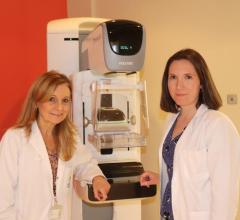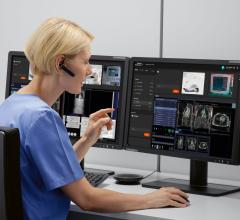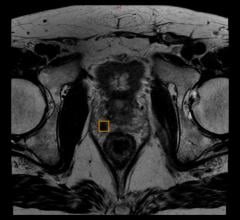
Jan. 2, 2013 -– New research published in the January issue of The Journal of Nuclear Medicine shows that 18F-fludeoxyglucose (18F-FDG) positron emission tomography (PET)/computed tomography (CT) imaging offers significant prognostic stratification information at initial staging for patients with locally advanced breast cancer. When compared to conventional imaging, 18F-FDG PET/CT more accurately showed lesions in the chest, abdomen and bones in a single session, changing management for more than 50 percent of the patients in the study.
Guidelines from the National Comprehensive Cancer Network (NCCN) recommend a physical examination, bilateral mammogram, sonography or breast magnetic resonance (MR) imaging to examine the breast, as well as chest diagnostic CT, abdominal or pelvic diagnostic CT or MR imaging and bone scanning for evaluation of distant involvement. The NCCN guidelines consider 18F-FDG PET/CT to be “most helpful in situations where standard staging studies are equivocal or suspicious.”
“The prognosis of patients with locally advanced breast cancer remains poor. In this study we aimed to investigate whether the use of 18F-FDG PET/CT at initial staging could have an impact on the prognostic stratification and management of patients with locally advanced breast cancer,” said David Groheux, MD, PhD, lead author of the study “18F-FDG PET/CT in Staging Patients with Locally Advanced or Inflammatory Breast Cancer: Comparison to Conventional Staging.”
One hundred and seventeen patients with locally advanced breast cancer were prospectively included in the study over a course of five years. Patients underwent conventional imaging methods, including bone scanning, chest radiography, or dedicated CT and abdominopelvic examination by sonography or contrast-enhanced CT and were staged accordingly. They then received an 18F-FDG PET/CT scan, which was reviewed by nuclear medicine specialists with no knowledge of the conventional imaging results. The conventional imaging and 18F-FDG imaging results were then compared.
All primary tumors were identified by 18F-FDG PET/CT. The scans confirmed lymph node involvement in stage IIIC patients and revealed unsuspected lymph node involvement in 32 additional patients. Furthermore, distant metastases (bone, distant lymph nodes, liver, lung and pleura) were visualized with 18F-FDG PET/CT in 43 patients; conventional imaging only identified 28 patients with distant metastases. Overall, 18F-FDG PET/CT changed the stage of 61 out of 117 patients, which, in turn, impacted the recommended treatment for the patients.
“This is a step toward the truly personalized medicine that molecular imaging can bring—acquiring an image that provides sufficient information to truly tailor management strategies to the singular needs of each patient,” noted Groheux. “Based on these findings, 18F-FDG PET/CT may become the single most important distant staging modality in patients with locally advanced breast cancer.”
Authors of the article “18F-FDG PET/CT in Staging Patients with Locally Advanced or Inflammatory Breast Cancer: Comparison to Conventional Staging” include David Groheux, Department of Nuclear Medicine, Saint-Louis Hospital, Paris, France, and B2T, Doctoral School, IUH, University of Paris VII, France; Laetitia Vercellino and Marie-Elisabeth Toubert, Department of Nuclear Medicine, Saint-Louis Hospital, Paris, France; Pascal Merlet, Department of Nuclear Medicine, Saint-Louis Hospital, Paris, France, and Service Hospitalier Frederic Joliot, SHFJ/I2BM/DSVCEA, Orsay, France; Elif Hindie, B2T, Doctoral School, IUH, University of Paris VII, France, and Department of Nuclear Medicine, Haut-Leveque Hospital, CHU Bordeaux, University of Bordeaux-Segalen, Bordeaux, France; Sylvie Giacchetti, Caroline Cuvier and Marc Espie, Breast Diseases Unit, Department of Medical Oncology, Saint-Louis Hospital, Paris, France; Marc Delord, Department of Biostatistics and Bioinformatics, Institut Universitaire d’Hematologie, Paris, France; and Christophe Hennequin, Department of Radiation Oncology, Saint-Louis Hospital, Paris, France.
For more information: http://jnm.snmjournals.org


 April 23, 2024
April 23, 2024 








